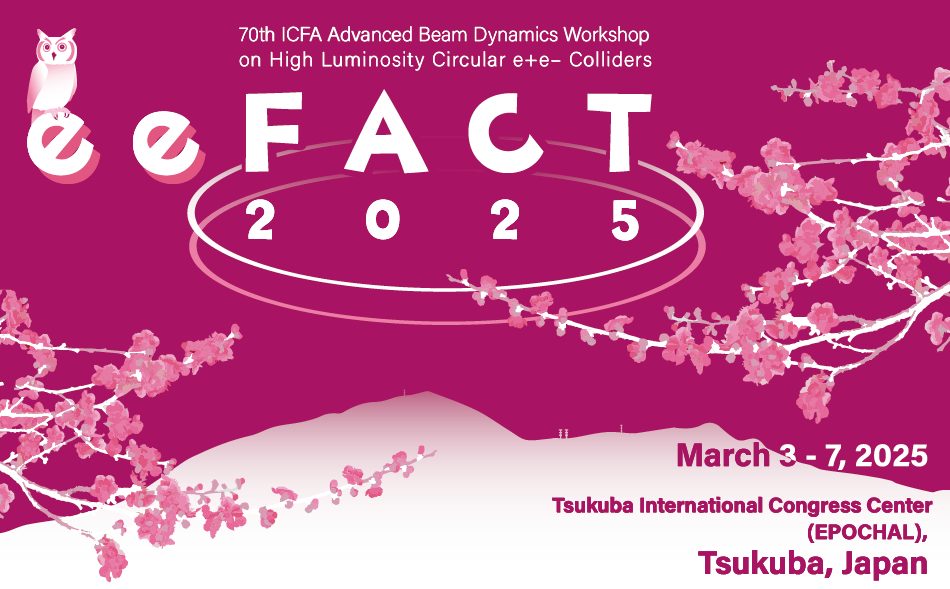In response to the beam characteristics and measurement requirements of the injector at the next-generation electron-positron collider, the Super Tau-Charm Facility (STCF), a method for measuring bunch length and bunch charge using a cavity is proposed. This report presents the basic principles and system configuration of the cavity-based beam monitoring technique. The design parameters and...
The bunch-by-bunch feedback system is now an key function in high-current, multi-bunch storage rings to suppress coupled-bunch instability and/or to reduce the effects of injection vibration. In high-luminosity e+e- colliders such as SuperKEKB, strong beam-beam interactions occur due to collisions, so the side effects of the feedback system can have a large impact on the luminosity. In this...
Beam profile diagnostics will play a crucial role in the commissioning and efficient operation of the electron-positron Future Circular Collider (FCC-ee).
This talk presents the current status of feasibility studies for the transverse diagnostics systems. Non-invasive techniques are essential to prevent beam perturbations during regular physics operation.
As is customary in high-energy...
Relativistic charged particles moving near a dielectric medium emit radiation through a process similar to classical in-medium Cherenkov radiation. The distinctive features of this effect—such as a well-defined and high emission angle, along with sensitivity to beam parameters—make it a promising candidate for a non-invasive diagnostic technique. However, theoretical models describing the...

